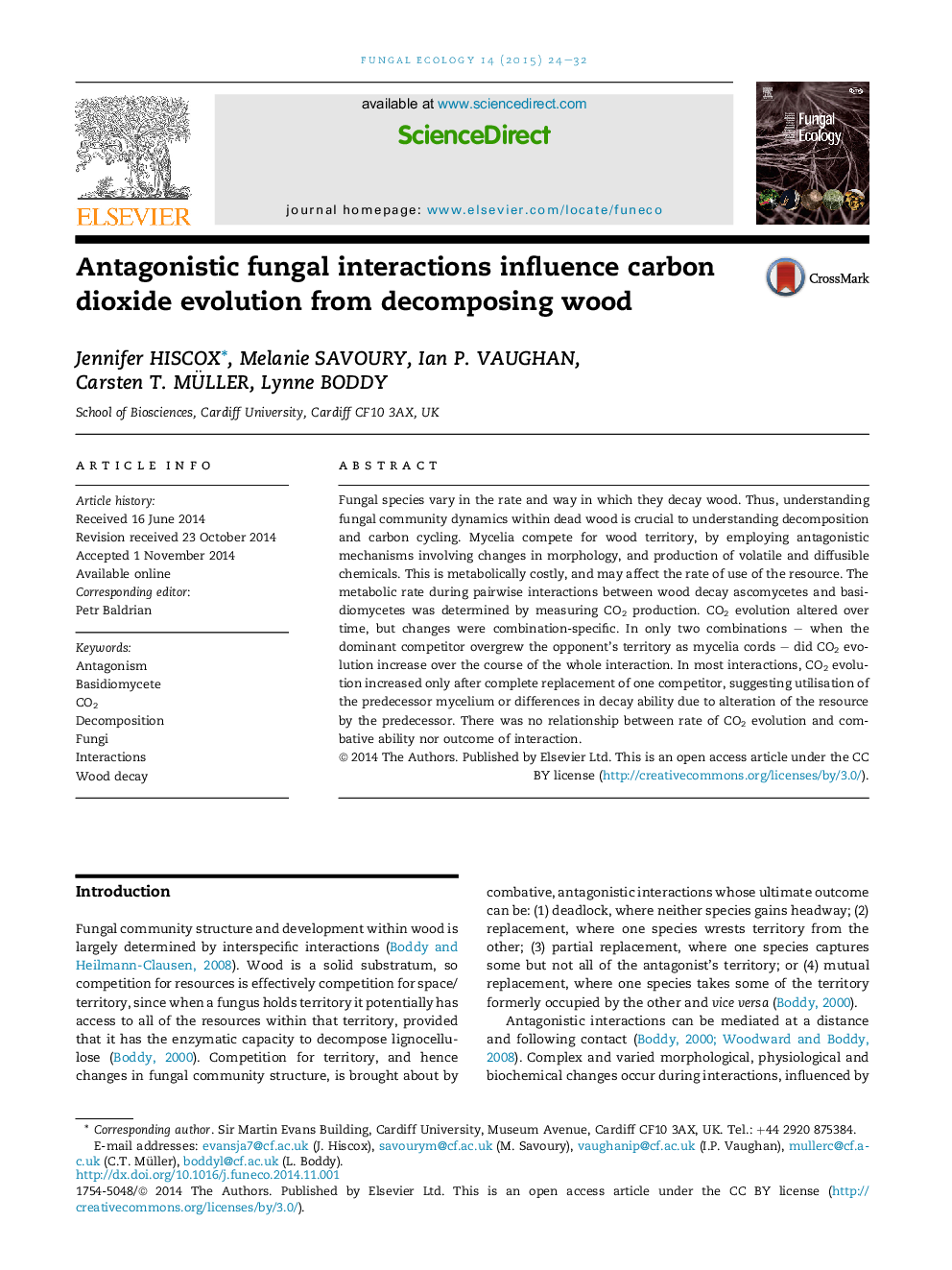| کد مقاله | کد نشریه | سال انتشار | مقاله انگلیسی | نسخه تمام متن |
|---|---|---|---|---|
| 8384564 | 1543650 | 2015 | 9 صفحه PDF | دانلود رایگان |
عنوان انگلیسی مقاله ISI
Antagonistic fungal interactions influence carbon dioxide evolution from decomposing wood
ترجمه فارسی عنوان
تعامل قارچی آنتاگونیستی، تکامل دیاکسیدکربن را از چوب تجزیه می کند
دانلود مقاله + سفارش ترجمه
دانلود مقاله ISI انگلیسی
رایگان برای ایرانیان
کلمات کلیدی
موضوعات مرتبط
علوم زیستی و بیوفناوری
علوم کشاورزی و بیولوژیک
بوم شناسی، تکامل، رفتار و سامانه شناسی
چکیده انگلیسی
Fungal species vary in the rate and way in which they decay wood. Thus, understanding fungal community dynamics within dead wood is crucial to understanding decomposition and carbon cycling. Mycelia compete for wood territory, by employing antagonistic mechanisms involving changes in morphology, and production of volatile and diffusible chemicals. This is metabolically costly, and may affect the rate of use of the resource. The metabolic rate during pairwise interactions between wood decay ascomycetes and basidiomycetes was determined by measuring CO2 production. CO2 evolution altered over time, but changes were combination-specific. In only two combinations - when the dominant competitor overgrew the opponent's territory as mycelia cords - did CO2 evolution increase over the course of the whole interaction. In most interactions, CO2 evolution increased only after complete replacement of one competitor, suggesting utilisation of the predecessor mycelium or differences in decay ability due to alteration of the resource by the predecessor. There was no relationship between rate of CO2 evolution and combative ability nor outcome of interaction.
ناشر
Database: Elsevier - ScienceDirect (ساینس دایرکت)
Journal: Fungal Ecology - Volume 14, April 2015, Pages 24-32
Journal: Fungal Ecology - Volume 14, April 2015, Pages 24-32
نویسندگان
Jennifer Hiscox, Melanie Savoury, Ian P. Vaughan, Carsten T. Müller, Lynne Boddy,
